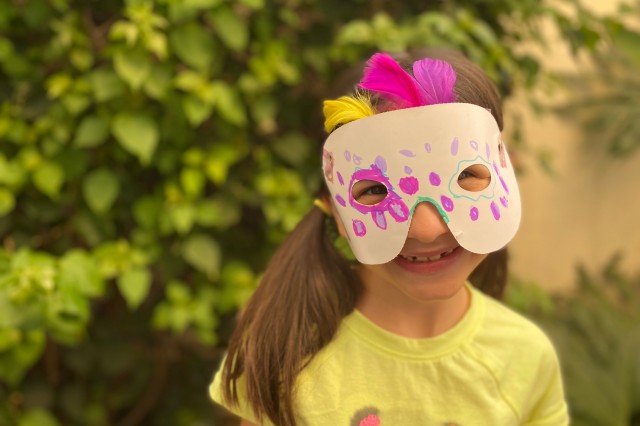Wonderstruck
Little campers—and their parents—look back at the summer that they were blown away by science
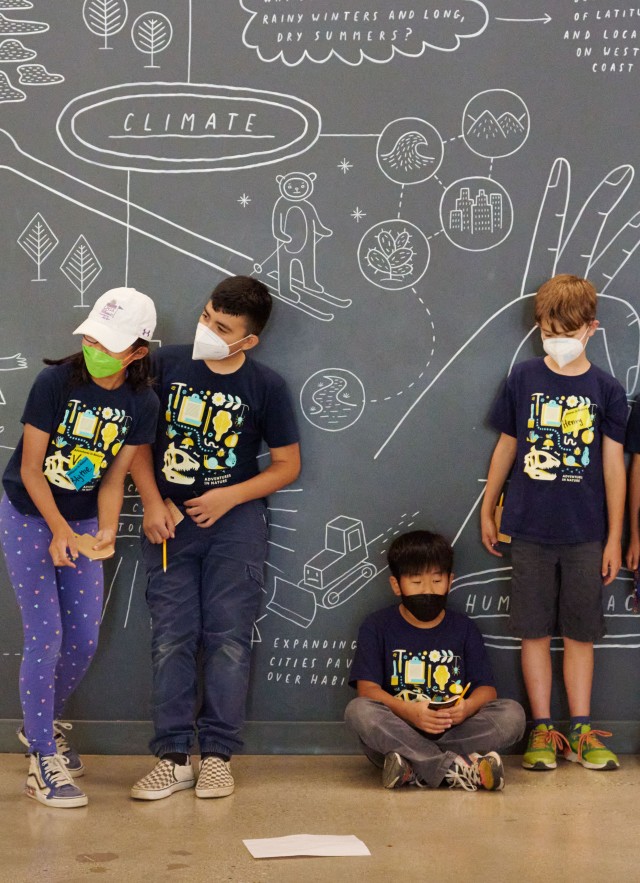
“Sharks aren’t the best parents, specifically Great Whites,” said Emmet Koepsel, “Babies have to flee in terror from their mother because the mother could eat them.” The 8 year old had another fact to convey: “It was interesting to find out about a slug that was as long as one of those pretzels you get at a carnival.” Just two bites of knowledge this 3rd grader dropped into his memory bank this summer at NHMLAC’s Adventures in Nature Camp.
Now in its third decade, AIN welcomed 214 kids in K-8 grade this summer—with 22 spots reserved for scholarships—from all over Southern California. The lessons and activities for each of the five themed weeks were crafted by NHMLAC educators and museum scientists, who conferred upon the eager children special access to 4.5 billion years of life on Earth. Each grand adventure was tailored by age—K-2; Grades 3-5; and Grades 6-8—with the goal of sparking a fascination with Science, Technology, Engineering and Mathematics (STEM) through activities and experiences designed to support both independent and collaborative group work, original thinking, analysis, and creativity.
Little Creatures, Big Museum
In the grand halls, the blue T-shirted cohorts explored the world of dinosaurs and discovered where on Earth paleontologists and amateurs found their fossilized bones. Scientists popped by to reveal to the kids how these remnants of life can help them understand how those giant ancient land animals—as well as ancient sea creatures, mammoths, and saber-toothed cats—lived. The kids studied the bios of their present-day urban neighbors: bats, insects, and snails, and met some of those critters in the six-acre green space that encircles NHM. The children dove into prehistoric L.A.’s underwater past, saw insects preserved perfectly in amber (ancient tree sap), and learned how mammoths have been discovered frozen in glaciers. Campers got firsthand intel from an entomologist, too, about why the butterflies fluttering in the nearby Pavilion were so busy.
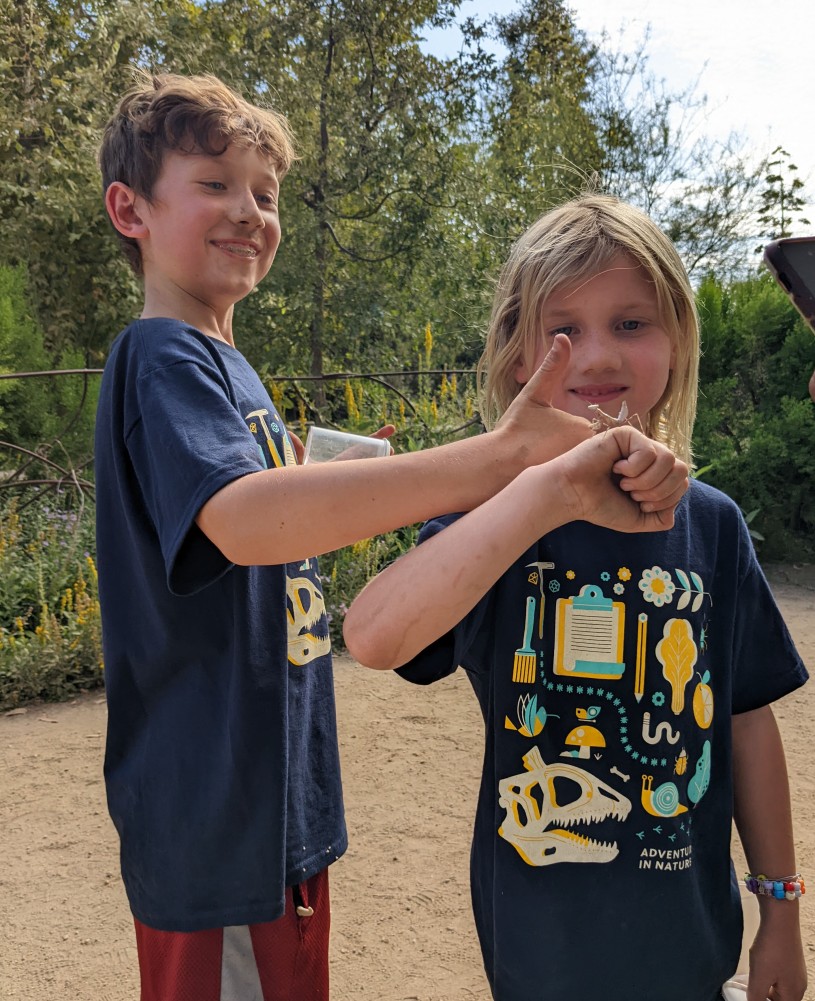
Paleo Prodigies
Emmet’s Mom, Rebecca Tierney, said she enrolled her son, and her daughter, Blythe, for all five weeks. “We loved it. Knowing the kids are immersed in that and also getting to enjoy the museum, I felt reassured every time I dropped them; I knew they were having a quality experience.”
Tierney said her kids were both energized and motivated to learn more. Seven-year-old Blythe was thrilled to learn all about wildlife during “Little Critters, Big City” week. In one lesson, they learned from museum scientists how to classify and sort living things into groups based on their shared characteristics. For example, insects with large back legs would be one group, and those with hard shells covering their wings, another. “They loved that they could handle bugs,” Tierney said. "Blythe especially was beyond blown away by the number of critters that she was allowed to touch.” In the Butterfly Pavilion, she briefly made the acquaintance of a praying mantis.
"It feels intentional, designed, and curated in a way you would expect a world class museum to be. But then it also had a connected-to-nature quality to it. It still felt like an oasis." — Camper Parent Rebecca Tierney.

Carlos Rivera, a parent of two happy attendees, was impressed at how these hearty lessons were served up in delectable morsels. His two, Eva Rivera-Martinez, and Alejandro Rivera-Martinez, dug into the “Fantastic Fossils and Where to Find Them” week with pint-sized gusto. Side by side with other young fossil fanatics, they were gobsmacked at the ice age bounty inside La Brea Tar Pits’ Fossil Lab and the Triassic treasures in NHM’s Dinosaur Hall.
“We’ve been members for years—since they were infants,” said Rivera. “They have always loved the museum and the fossils, dinosaurs, and animal models on display. This being the first summer they could be out and active again seemed like a great opportunity to keep them busy.”
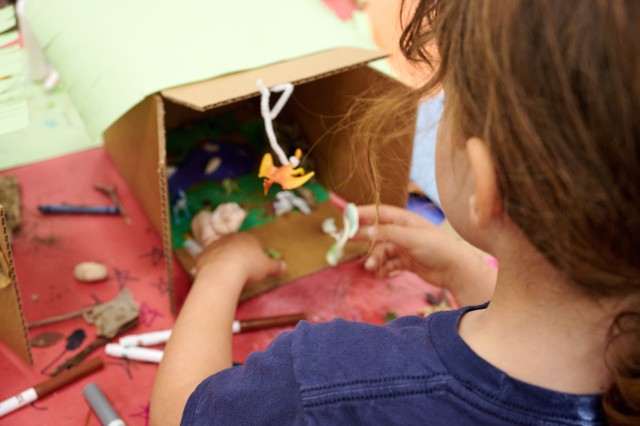
Wade Hammond
AIN Campers created dioramas habitats for the dinosaurs of their choice.
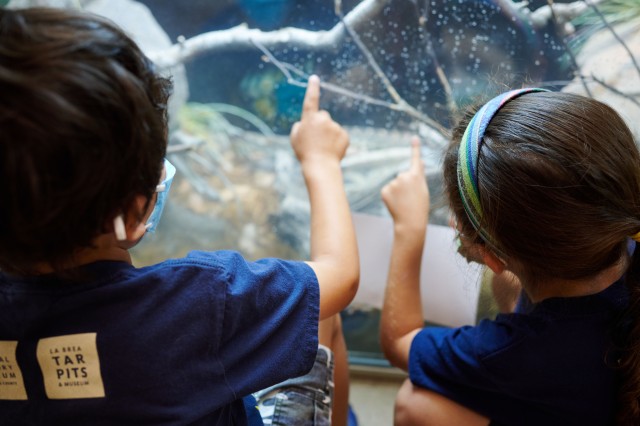
Wade Hammond
A pair of AIN Campers Summer investigate which inhabitants are occupying the Nature Lab's watery abode.
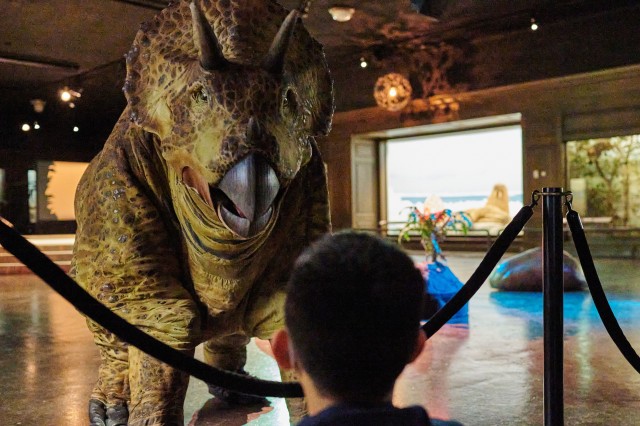
Wade Hammond
AIN Campers meet Dakota the Triceratops at a reinvented Dinosaur Encounters show in the NHM's diorama hall.
1 of 1
AIN Campers created dioramas habitats for the dinosaurs of their choice.
Wade Hammond
A pair of AIN Campers Summer investigate which inhabitants are occupying the Nature Lab's watery abode.
Wade Hammond
AIN Campers meet Dakota the Triceratops at a reinvented Dinosaur Encounters show in the NHM's diorama hall.
Wade Hammond
One of the standout favorite activities for campers this summer was the dinosaur diorama activity. The supplies: construction paper, rocks, leaves, glue, colored markers, pipe cleaners, and a box. The prompt: What kind of resources (food, water, shelter) would their particular prehistoric pal need? Based on the size and diet, what type of environment would it be well-adapted to live in? The children imagined the topography, and mused about what the Jurassic (roughly 66 million) and Triassic (more than 200 million) weathercasters might have had to say.
“We were building a house with dinosaurs, a place with dinosaurs,” said 5-year-old camper Camila Heimisdottir-Muro recently recalling her paleo art project. “And I know why they died! A star fell off the sky.”
Camila’s Mom, Marvella Muro, said her daughter loved camp so much she took the fossil-hunting spirit home. “My husband planted a tree, and in digging it up, he found a pork chop. The past owner’s dog probably buried it there. She swore it was a fossil and took it to the camp to share it.” “As a community partner [Self-Help Graphics], we qualified for the scholarship and that was the only way to afford the camp,” said Muro. “If I’m able to qualify for camp, we’ll go next summer. "Camp allows kids to explore deeper with individuals who have that knowledge, and it deepened her understanding of the sciences. She loved it there.”
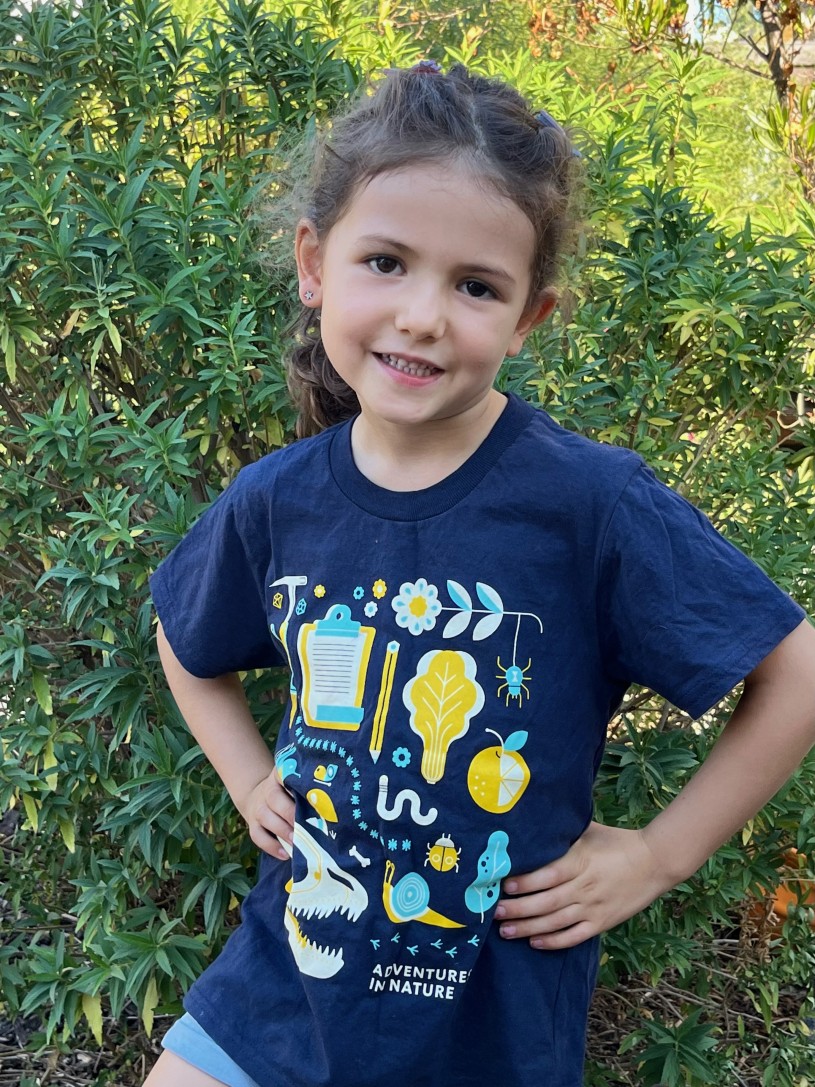
Adventures in Nature scholarships were made possible with support from Hitachi SCRCAC.
Join us for camp this winter as we reveal the secrets of the museum! Find out more here.
